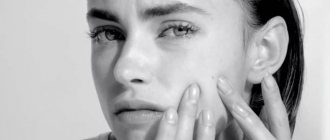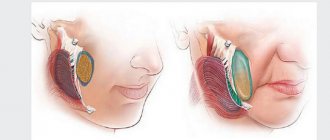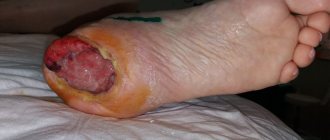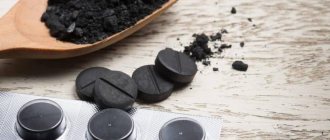Probably every second woman and every first man had to deal with them. As ancient as humanity itself, blackheads are nothing more than open comedones. When the mouths of skin follicles are expanded, they are easily clogged with a mixture of sebum and dead epidermal cells. This cocktail inevitably oxidizes and – hello, black dot!
The specificity of these skin imperfections is such that the thicker the sebum, the worse the exfoliation of the epidermis, the greater the chance of getting a scattering of comedones. More often - on the forehead, nose, chin and along the hairline.
There are usually several reasons.
- Hormones. Exceeding the norm of certain hormones leads to thickening of sebum and thickening of the epidermis. As a result, inflammation and comedones appear on the skin of the face - both open and closed. When the main cause of clogged pores is hormones, even the best remedy for blackheads will not save you, but it will keep the situation under control.
- Nutrition. Recent scientific studies have proven that dark chocolate is not as dangerous to the skin as baked goods and sugar. Foods with a high glycemic index are what scientists call them. Fruits, vegetables and grains, on the contrary, reduce the risk of acne.
- Incorrect care. Insufficient cleansing, lack of makeup remover, aggressive washing gels, comedogenic creams - all this is fraught with clogged pores, especially for oily skin.
- Stress. Problems at work, school or at home affect the health of facial skin only indirectly. Stressful situations disrupt the balanced distribution of vitamins and minerals throughout the body's systems, and the skin and hair are supplied according to a residual principle. In addition, when our nerves give out, we are more likely to ignore normal hygiene, leading to acne on our skin.
- Heredity. Sometimes the width of pores and viscosity of sebum are determined by genes. In this case, it will not be possible to get rid of blackheads forever. The good news is that fighting them is not useless. Regular care allows you to keep your skin beautiful and clean.
Effective methods to get rid of blackheads
Not all of these methods of cleansing the skin and removing blackheads are universal, but you definitely need to know about them.
- Cosmetics Dermatologists advise choosing a range of care from one brand and using it daily. The least that cosmetics can do against blackheads is to noticeably lighten them and keep the pores clean after a visit to a cosmetologist.
- Pharmacy preparations Complexes of biologically active substances for problem skin should contain zinc, vitamin A, B vitamins, silicon and magnesium, which reduce the production of sebum by the sebaceous glands and dilute it. But be prepared to disciplinedly monitor your dietary supplement intake with a doctor.
- Salon procedures From mechanical cleaning to deep chemical peeling - in the salon you can get any service for cleaning and tightening pores with a prolonged effect. Entrust your face only to qualified dermatologists and be prepared for the fact that the procedures will not work on you - this is possible if the problem is deep inside, and not in the skin layers.
- Homemade recipes The rating of homemade remedies for blackheads puts mixtures with parsley, yeast, celandine, salt, soda and other kitchen “residents” in first place. Doctors are pessimistic: these products are likely to cause allergies, and gruel with salt and soda will lead to dehydration, which is much more unpleasant than clogged pores.
- Diet and maintaining hydration Proper nutrition and one and a half liters of water per day are suitable for both men and women. In the long term, an active and healthy approach to life normalizes metabolism and makes the skin clearer. In addition, a diet rich in zinc, alpha-lipoic acid and retinol (and these are the same fruits and vegetables, herbs, beef, dairy products) balances the composition and viscosity of sebum.
Causes of deep pores
Most often, those with a darker shade and oily skin type suffer from deep pores - the reason lies in incomplete cleansing of dirt or subcutaneous fat.
Pore enlargement can also be caused by:
- weakened immune system;
- frequent stress;
- lack of normal sleep;
- abnormalities in the functioning of the thyroid gland;
- long-term use of medications.
To narrow the pores, deep cleansing of the keratinized layer of the epidermis should be carried out at least once a month.
Features of cosmetics against blackheads
Did you know that remedies for blackheads, for example, on the nose, have the same mechanism of action as lotions for comedones on the back? Modern cosmetics begin with active ingredients - they are well studied and successfully used all over the world.
Compound
Anti-comedogenic substances in cosmetics serve several purposes. They need to dissolve the plug in the skin pores, draw it to the surface, and make the skin smooth and matte. An effective remedy for blackheads must contain at least a couple of components from this list.
- — Salicylic acid – at a concentration of 2% it dissolves the contents of pores and has a delicate antibacterial effect on the skin.
- - Glycolic acid - acts similarly, but only on the surface of the skin.
- — Zinc – fights oiliness, mattifies well, prevents inflammation.
- — Plant extracts – some of them mattify, while others visually reduce pores and soothe the skin.
- - Clay and charcoal - they are loved for their absorbent talents, their ability to draw out impurities from pores, reduce and lighten blackheads.
- — Mild abrasive additives – exfoliate the epidermis and polish the skin, restoring its smoothness and softness.
Properties
Cosmetic ranges, whose formulas are based on active ingredients, are produced in entire “families” - so one set of cosmetics for problem skin will replace all your usual care. In these ranges, each product has its own specificity, but together they go towards the same goal.
- Moisturizers. Oily and at the same time dehydrated skin – does this happen? Even so, if there is no moisturizing product without comedogenic substances in your care.
- Cleansing. They are the main ones here: they work in the pores, renew the epidermis, remove impurities and excess sebum, gradually reducing the number of clogged pores.
- Exfoliating. Created for regular skin renewal. Those with blackheads, as a rule, have a slower exfoliation of dead cells - this cannot be done without outside help.
- Toning. By enhancing the effect of cleansers, they soothe the skin and even prevent the appearance of oily shine throughout the day.
What is post-acne
Acne can appear on the face and neck, in the interscapular area, on the back and in the upper chest. Acne or acne is the formation of inflammatory elements on the skin - compacted reddened tubercles (papules) and blackheads, purulent white heads with redness around them. If elements are injured, squeezed out or heal poorly, post-inflammatory, scarring, and pigmentary changes form on the skin - this is post-acne.
This is what post-acne looks like
Types of cosmetics for blackheads
Now let’s take a closer look at what cosmetic products help against blackheads – and how to incorporate them into your care.
Creams
A special cream for acne and blackheads can be drying, so it is permissible to alternate it with other moisturizing products: for example, in the morning - neutral care, and in the evening - cream with salicylic acid.
Scrubs
The general consensus is that products with scrubbing particles should be used most often - every other day, and ideally twice a week after an acid peel (tonic) or instead of a regular cleansing gel.
Tonics
Lotions and tonics are indispensable in the fight for a beautiful face: they gently exfoliate, mattify and enhance the effect of the care applied after them. Focus on the behavior of your skin - sometimes it is enough to wipe it with toner only in the morning.
Oils
Even oily skin needs ceramides, just in smaller quantities. Look for non-comedogenic oils and apply oil-based products twice a week only to moisturized skin.
Gels
If the gel cleanser for blackheads contains acids, that’s just great! But alcohol at the very beginning of the list of ingredients is undesirable, because the mission of the gel is to cleanse the skin of a mix of sebum and typical urban pollution without overdrying. You can wash your face with this product twice a day with a clear conscience.
Plasters
Not all cosmetologists approve of them. But what could be more effective than a strip that pulls out dozens of “columns” from pores at a time? And if you apply a steaming mask first... Be sure to consult your dermatologist before declaring war on blackheads with such a radical method, especially if you have sensitive skin.
Masks
Aimed at drawing out impurities from pores and reducing skin oiliness. Typically, the mask is applied once a week or more often after washing and only on dry skin, left for at least three minutes, and then washed off. Cleansing fabric masks are also useful as an express remedy.
Do you rinse your nose on your own or do it with a doctor?
There is a fundamental difference between rinsing the nose, which the patient can do independently, at home, and the procedure that is carried out in ENT offices using a medical electric suction device (aspirator).
When rinsing the nose on their own, the patient can only direct a stream of liquid under some pressure into one of the nasal passages. If the nasal passage is preserved, the fluid will reach the nasopharynx, where both nasal passages connect, and will leave it either through the second nasal passage or through the pharynx.
Since a stream of liquid does not necessarily occupy the entire lumen of the nasal passage, in this case we can only guarantee that it will enter the nasopharynx, and therefore this option for rinsing the nose will be referred to as a “nasopharyngeal douche”.
If the lavage is carried out by specialists, then first of all they will have to make sure that both nasal passages are patency, or achieve it, and only then, pouring liquid into one of the nasal passages, it is simultaneously actively aspirated through the other nasal passage. In this case, the liquid acts as a hydraulic piston, which actively draws exudate from the paranasal sinuses through their natural anastomosis and then evacuates it. This fluid, as a rule, does not enter the paranasal sinuses.










